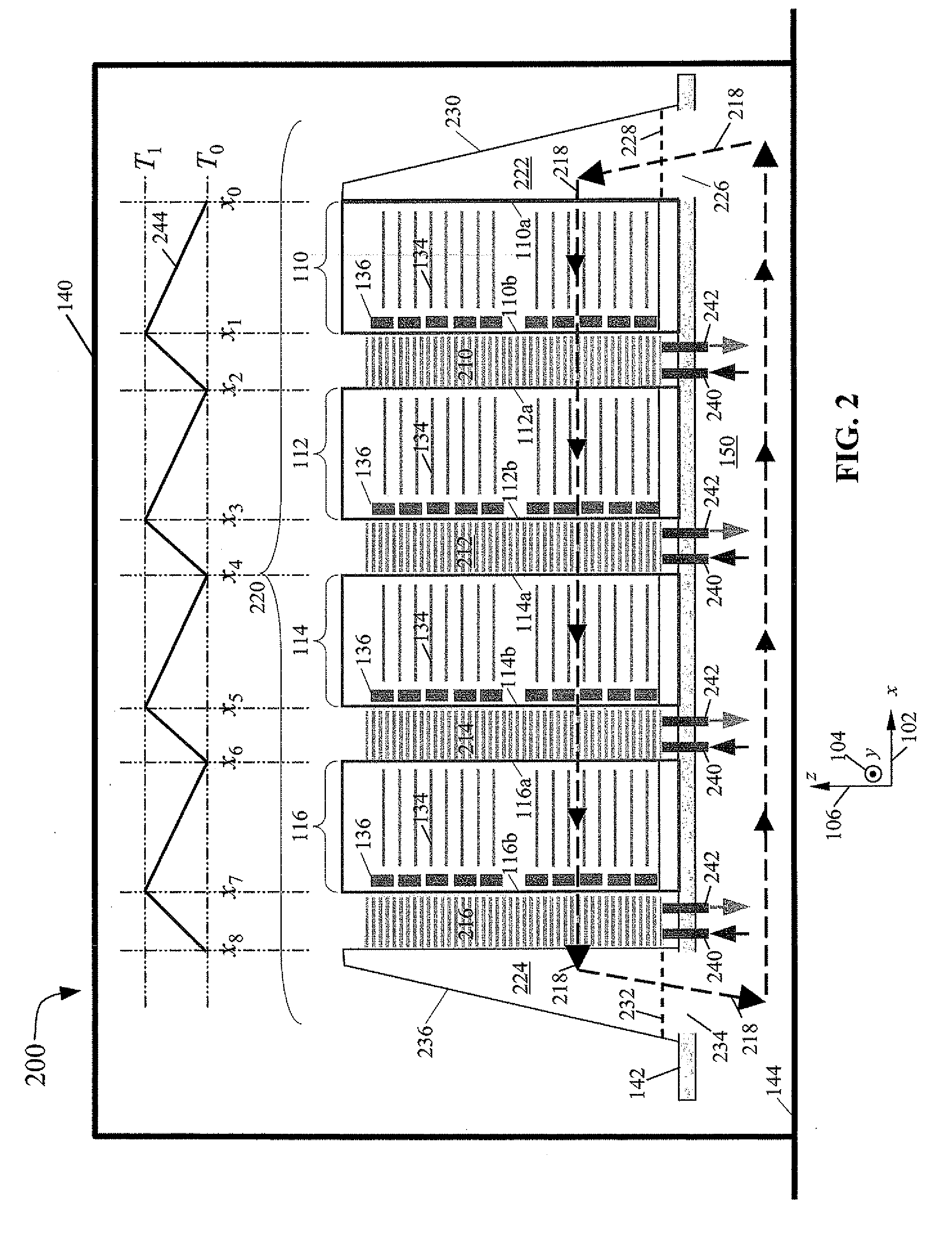Water-assisted air cooling for a row of cabinets
a technology of rowing cabinets and water-assisted air cooling, which is applied in the direction of electrical equipment, electrical apparatus, electrical apparatus contruction details, etc., can solve the problems of affecting the operation of the equipmen
- Summary
- Abstract
- Description
- Claims
- Application Information
AI Technical Summary
Benefits of technology
Problems solved by technology
Method used
Image
Examples
Embodiment Construction
[0032]Referring to FIG. 2, an illustrative embodiment of a cooling apparatus 200 according to the present invention uses the same reference numerals for like elements as the prior art apparatus 100 shown in FIG. 1. However, the apparatus 200 differs from the prior art apparatus 100 in at least two significant ways. First, on the downstream faces of each cabinet 110, 112, 114, 116, the present invention employs, in contrast to the prior art air plenums 126, 122, a series of air-to-water heat exchangers 210, 212, 214, 216. Second, the present invention uses, in place of the prior art's multiple S-shaped air paths 138, a single, row-wise airflow path 218 that travels substantially in the −x direction, straight through an entire flow-through row 220. The flow-through row 220 comprises the cabinets 110, 112, 114, 116; the heat exchangers 210, 212, 214, 216, and optionally an intake plenum and an exhaust plenum such as a bottom-intake plenum 222, and a bottom-exhaust plenum 224, respectiv...
PUM
 Login to View More
Login to View More Abstract
Description
Claims
Application Information
 Login to View More
Login to View More - R&D
- Intellectual Property
- Life Sciences
- Materials
- Tech Scout
- Unparalleled Data Quality
- Higher Quality Content
- 60% Fewer Hallucinations
Browse by: Latest US Patents, China's latest patents, Technical Efficacy Thesaurus, Application Domain, Technology Topic, Popular Technical Reports.
© 2025 PatSnap. All rights reserved.Legal|Privacy policy|Modern Slavery Act Transparency Statement|Sitemap|About US| Contact US: help@patsnap.com



